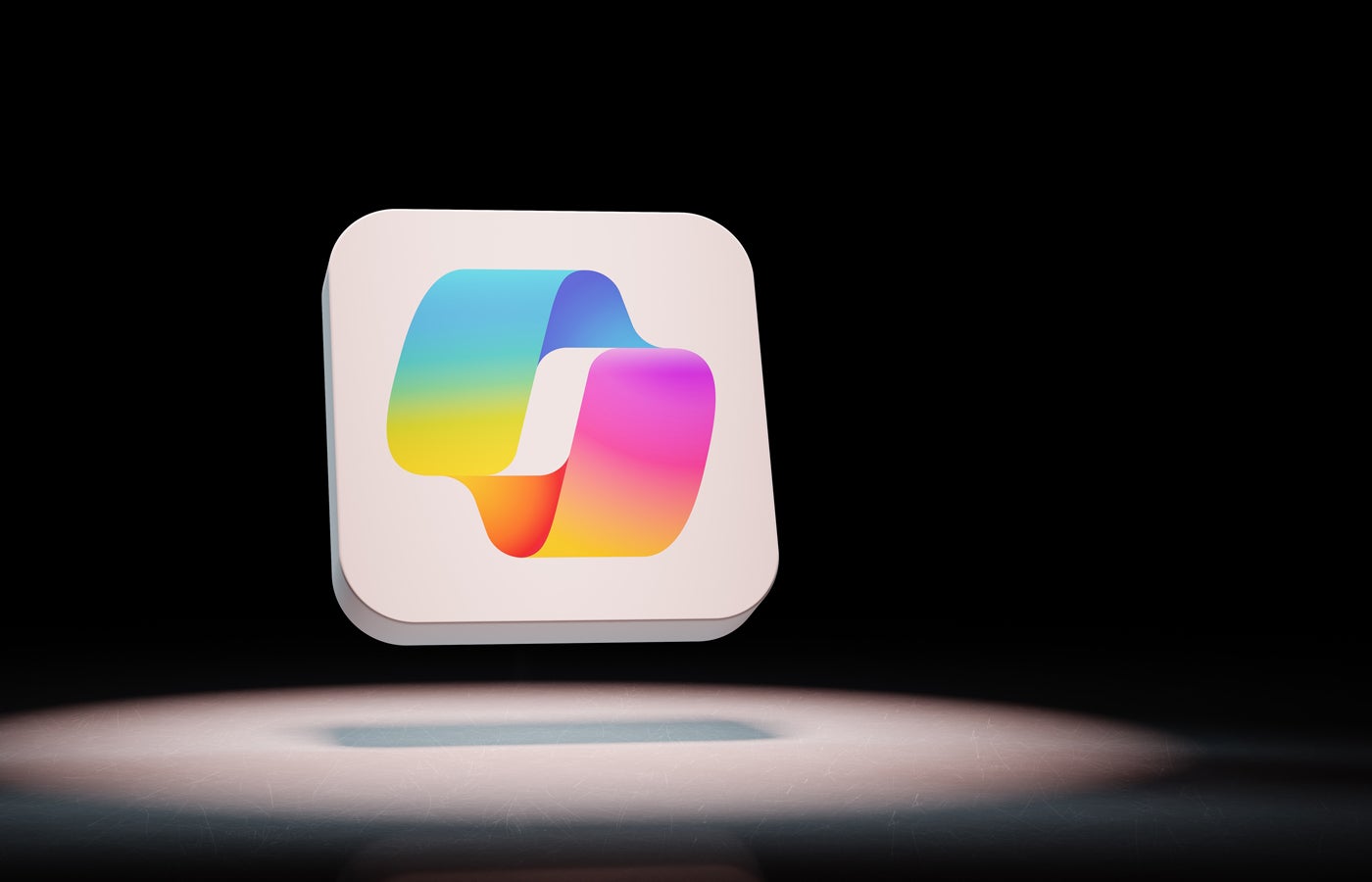Microsoft Copilot, with its integration into Windows, Bing, 365, Azure and Server, is purported to be the AI that unlocks the creative and productive potential of an organization’s people and data.
What is Microsoft Copilot?
Microsoft Copilot is an AI product that combines the power of large language models with in-house enterprise data generated by the Microsoft Graph and Microsoft 365 applications. Using the power of AI and natural language conversations, users can find better answers to their questions and potentially create content from those answers. Copilot was developed on the ChatGPT platform and announced as an in-development platform at the July 2023 Microsoft Inspire conference. As of September 2024, Copilot runs on GPT-4o. Microsoft plans to use OpenAI o1 for Copilot at an unspecified time in the future.
There are three versions of Copilot:
- Copilot for Microsoft 365 (formerly known as Microsoft 365 Copilot), which requires a subscription,
- Copilot Pro, another subscription version that provides priority access GPT-4 and GPT-4 Turbo during times of high traffic
- and a more general, free Microsoft Copilot.
It is important to note that Copilot for Microsoft 365 is different from the consumer and small business-oriented Copilot platform found in Bing Chat or non-enterprise versions of Microsoft 365. These Copilot LLMs are trained on more generalized aggregate data gathered across the internet and therefore tend to have more generalized results. Copilot for Microsoft 365 is dependent on the data generated by a specific — and only a specific — enterprise.
Both Copilot versions are embedded in the Microsoft 365 apps, including Word, Excel, PowerPoint, Outlook, and Teams. This complete Microsoft 365 integration allows an organization’s workers to be more creative, unlock productivity gains, and potentially improve their skills. In addition, Microsoft 365 Copilot adds AI-enabled Microsoft 365 Chat (sometimes called Business Chat) to the productivity suite, which works across enterprise-specific data like calendars, emails, chats, documents, meetings, and contacts to help employees communicate easier and better.
As of Dec. 5, Copilot ran on OpenAI’s GPT-4 large language model and the DALL-E 3 image generation model from the same company. On March 12, Microsoft CEO of Advertising and Web Services Mikhail Parakhin announced that the Copilot free tier now defaults to GPT-4 Turbo. (Copilot Pro users have the option to switch back to GPT-4.)
As of March 21, Copilot for Microsoft 365 is available in Windows via the “Work” toggle (as opposed to the “Web” toggle for the public Copilot using generally available data). Microsoft also announced two new Surface for Business devices meant for use with Copilot, the Surface Pro 10 and Surface Laptop 6, both of which came out on April 9. These and the new Surface Pro Keyboard have a dedicated Copilot key.
On May 20, Microsoft revealed new AI PCs built around Copilot in a prebriefing for the Build conference. The Copilot+ laptops, available in the future from Microsoft, Dell, Lenovo, Acer, HP, and Asus, will be able to run the AI locally.
On Sept. 16, Microsoft expanded Copilot integration into the 365 suite with Phase 2, bringing new integration with One Drive and new autonomous AI agents, as well as additions to existing integrations.
What are the versions of Microsoft Copilot?
As of Nov. 15, 2023, Microsoft consolidated three versions of Microsoft Copilot (Microsoft Copilot in Windows, Bing Chat Enterprise, and Microsoft 365 Copilot) into two: Microsoft Copilot and Copilot for Microsoft 365. In January 2024, Microsoft added another option: Copilot Pro.
Microsoft Copilot
Microsoft Copilot incorporates the tools formerly known as Bing Chat and Bing Chat Enterprise. It is suitable for individual or SMB users. Microsoft Copilot has a seamless visual identity across Bing, Edge, Microsoft 365, and Windows, being accessible through the same icon in all of them. This version of Copilot allows you to use generative AI to create and complete tasks inside the Windows operating system and with Windows apps. Copilot is available from the taskbar or with the Windows Key + C keyboard shortcut.
Commercial data protection is applied to any interaction with Microsoft Copilot when the user signs in with Microsoft Entra ID.
The following licenses gain access to commercial data protection with Microsoft Copilot:
- Microsoft 365 E3, E5.
- Microsoft 365 F3 (coming soon).
- Microsoft 365 A3, A5 (Faculty only).
- Business Standard.
- Business Premium.
Copilot for Microsoft 365
Copilot for Microsoft 365 builds on the Bing Chat Enterprise foundation, including enterprise-grade security, privacy, and compliance to ensure all data processing happens inside Microsoft 365. It is suitable for enterprise customers. The Copilot for Microsoft 365 experience includes Microsoft 365 Chat, which combs across your entire universe of data (emails, meetings, chats, documents, and more, plus the internet) to help you solve problems at work. Copilot for Microsoft 365 with Microsoft 365 Business Standard or Microsoft 365 Business Premium costs $30 per user per month.
Copilot for Microsoft 365 is also integrated into Microsoft 365 Apps, like Word, Excel, PowerPoint, Outlook, Teams, and more.
In January 2024, Microsoft removed the seat minimum (300 seats) for Copilot for Microsoft 365, offering it at $30 per user per month for between one and 299 seats. This expands the product’s commercial plan to small and medium-sized businesses.
Copilot Pro
Copilot Pro is a subscription service for individuals costing $20 per month per user. Intended for super users, it adds Image Creator from Designer (formerly Bing Image Creator). With Copilot Pro accessible through Copilot in Word, Excel, PowerPoint, Outlook, and OneNote on PC, Mac, and iPad for Microsoft 365 Personal and Family subscribers, Copilot Pro brings data from different applications together to allow the AI assistant to work with more context-relevant information. Copilot Pro will also provide access to Microsoft’s upcoming Copilot GPT Builder. Copilot Pro costs $20 per user per month.
SEE: Microsoft Copilot: Determine Which Version is Right for You
When will Microsoft Copilot be available?
As of December 2023, Copilot for Microsoft 365, Microsoft Copilot, and Copilot Pro are generally available.
How much does Microsoft Copilot cost?
- Microsoft Copilot in Windows will be available to customers for free.
- Copilot Pro costs $20 per user per month.
- Copilot for Microsoft 365 costs $30 per user per month.
At first glance, Microsoft 365 Copilot’s price point seems expensive, but it is vital to remember this version of the platform is designed for large business enterprises. For a large enterprise with thousands of employees, and assuming the platform delivers what Microsoft promises, that $30 could end up being a bargain. That is a big assumption to make at this early point in development.
The consumer and SMB versions of Microsoft Copilot will likely be priced differently than the enterprise counterpart. Bing Chat, which is also based on ChatGPT, is available now and for free as an integral part of Microsoft Edge. It is also likely that some feature-restricted or otherwise modified version of Copilot will be available for SMBs too small to have meaningful in-house generated data available to train the AI platform.
The pricing for all the versions of Microsoft Copilot is likely to change as development of the platform continues. With the large number of competitors in the AI platform space, it seems almost certain the cost of these services will change significantly.
Copilot in Windows 11
In January, Microsoft announced new Windows 11 PCs (including the Surface line) coming out in late February through Spring 2024 will include a Copilot key. The Copilot key enables easy access to Copilot in Windows.
Windows 11 brings a wide variety of capabilities for Copilot, including but not limited to:
- Displaying system, device and battery information
- Launching narration or the Voice Access page
- Showing available Wi-Fi networks
- Connecting to third-party apps like OpenTable for business lunch reservations.
The Surface Pro 11 and Surface Laptop 7 will be able to run AI features on-device.
In October, Microsoft announced additional Copilot features on supported PCs. Plus, the company slightly revamped the Recall feature on its AI PCs in response to security concerns. The changes and features announced Oct. 1 were:
- Microsoft changed the Recall feature to be opt-in. Recall now requires Windows Hello login in order to confirm the user’s presence. Recall will put privacy filters over credit card details or personal identification numbers. Microsoft expects to announce general availability of Recall at a later date, but Windows Insiders using Intel- or AMD- powered Copilot+ PCs will be able to use the preview version in November.
- Microsoft introduced “Click To Do,” which brings up suggested actions to take with AI. Hold down the Windows key and click on any image of text to use Click To Do. The feature is available in preview.
- Search your PC and OneDrive using natural language and keywords “in the coming months.”
- Upscale older or blurry images to 4K.
- Edit images and generate new images with AI in Paint.
Starting Oct. 1, Copilot enthusiasts can sign up for Copilot Labs, a preview program for Copilot Pro users. Today, select Copilot Pro members in Australia, Canada, New Zealand, the U.K. and the U.S. can be the first to use Think Deeper, a version of the AI that processes data relatively slowly to reason through more complex tasks.
A select group of Pro users in the U.S. will also be able to preview Copilot Vision — an opt-in feature that integrates Copilot directly into Microsoft Edge. Copilot Vision can answer questions about the websites you visit, help navigate the page, or take actions. Microsoft has implemented various security and privacy safeguards around Copilot Vision, including ensuring the AI cannot access paywalled sites.
Copilot “understands the context of your life, while safeguarding your privacy, data and security, remembering the details that are most helpful in any situation,” wrote Mustafa Suleyman, executive vice president and CEO of Microsoft AI, in a blog post.
“Over time it’ll adapt to your mannerisms and develop capabilities built around your preferences and needs,” Suleyman wrote.
What are business benefits to using Microsoft Copilot?
Assuming Microsoft Copilot works as advertised, an employee could jump-start a project (e.g., email, presentation, report, data visualization) with an AI-generated first draft. With that foundation, the employee can quickly move on to refining and iterating a second draft and then a final draft, cutting at least one step from the process. This can make the employee more efficient and productive, and it could allow for the development of new skills.
For Copilot for Microsoft 365, the key to these productivity gains is the application of enterprise-specific data to the new project from the start. Using data internally generated by the enterprise from emails, documents, calendars, contacts, and so on, presumably the project will be jump-started with limited, and more importantly, pertinent assets.
SEE: Hiring kit: Prompt engineer (TechRepublic Premium)
For example, if an enterprise employee at Ford is creating a presentation that needs to show movement, the AI — if properly trained — should use a Ford-related product rather than a similar product from one of its competitors. An AI trained by data culled from the internet may come to a different conclusion and defeat the purpose of deploying enterprise-specific generative AI.
How does Microsoft plan to integrate Copilot into its applications?
Copilot is integrated into the fabric of all Microsoft 365 applications. When an employee starts a Word document, reads an email in Outlook, opens an Excel report, or updates a PowerPoint presentation, Copilot and its generative AI abilities are there to assist when called upon. In January 2024, Microsoft added Copilot capabilities to the Microsoft 365 mobile app and launched a Copilot mobile app. In February 2024, Microsoft redesigned the Copilot homepage and app.
Below are examples of use cases and commands a user might give Microsoft Copilot.
Copilot in Word
- Draft a two-page project proposal based on data gleaned from a Word document (i.e., either the one you are currently working on or one that you specify by name) and an Excel worksheet.
- Make the third paragraph in the current document more concise and change the tone of the document to be more casual.
- Create a one-page draft based on this rough outline.
- With Phase 2, Microsoft put a floating prompt bar in Word that provides suggestions for prompts and can spruce up first drafts.
Copilot in Excel
- Break down this sales data by type and channel and then insert a table.
- Project the impact of a variable change in this data and then generate a chart to help visualize it.
- Model how a change to the growth rate for a variable would impact my gross margin.
- Write in Python.
Copilot in PowerPoint
- Create a five-slide presentation based on this Word document and include relevant stock photos.
- Consolidate this presentation into a three-slide summary.
- Reformat these three bullets (in a specific PowerPoint presentation) into three columns, each with a picture.
- Make the presentation in accordance with our company brand guidelines.
- Shape a presentation with “narrative builder.”
Copilot in Outlook
- Summarize the emails missed while out of the office last week and flag any important items.
- Draft a response thanking the senders of an email and asking for more details about their second and third points.
- Shorten a draft email and make the tone more professional.
- Invite everyone to a lunch-and-learn about new product launches next Thursday at noon. Mention that lunch is provided.
- Use the Prioritize my inbox feature to move the most important emails to the top of the list.
Copilot in Microsoft 365 Chat
- Summarize the chats, emails, and documents about the topic being discussed.
- What is the next milestone for a project? What risks were identified? Brainstorm a list of potential mitigations.
- Write a new planning overview in the style of this (specified existing) document that contains the planning timeline from a different document and incorporate the project list in the email from this person (specifying a user’s name).
Copilot GPTs
- Use (specified existing) natural language prompts to build own custom generative AI assistants.
Designer for Copilot:
- Create images based on prompts.
- Edit generated images.
- Coming soon, access Designer GPT, an assistant for brainstorming with Designer for Copilot.
Copilot in Teams
- Summarize and analyze audio and text from recorded meetings.
Copilot in OneDrive
- Analyze files across OneDrive.
- Compare up to files to each other.
Copilot agents
- Copilot agents automate business processes. They can be programmed — using natural language — to take autonomous actions such as making orders under the appropriate circumstances.
- Agents can be built in Copilot agent builder, a subsection of Copilot Studio.
Copilot for Finance, Sales, and Service
On Feb. 29 Microsoft announced Copilot for Finance, Sales and Service. Copilot for Finance can create reconciliation summaries to quickly identify missing transactions or invoices, access customer and ERP records directly in Microsoft Outlook, draft emails to customers, analyze variances, and better understand root causes. Copilot for Finance is in public preview.
Copilot for Sales can sync with Outlook and CRM platforms to analyze customer and opportunity data. Copilot for Service can connect to Salesforce, ServiceNow, and Zendesk. It can be used to browse and update CRM records in Outlook, then add contacts directly to a CRM. It can also help create and deploy custom copilots (smaller chatbots) to agents. Copilot for Sales and Service are generally available.
Copilot for Security
Copilot for Security is a security dashboard and a generative AI chatbot that integrates with Microsoft’s other cybersecurity products and platforms. Copilot for Security will be generally available April 1 for a consumption-based fee.
What are potential problems and caveats with Microsoft Copilot?
All AI platforms are only as good as their training; if Microsoft Copilot is modeled after data that is incomplete, biased, wrong, or otherwise corrupt, the suggestions it generates, regardless of who is asking, will be incomplete, biased, wrong, or otherwise corrupt. The old adage of garbage in equals garbage out still applies.
For Copilot for Microsoft 365, training is particularly important because all the data used for that Copilot AI platform will be internally generated and gathered. Enterprises looking to properly apply AI will have to carefully monitor the data Copilot can access. For example, a business may not want brainstorming documents and meeting notes to be part of the data stream; rejected ideas may taint the data stream and propagate throughout the organization.
Storing this vast amount of data can still be a privacy problem when the data is stored on-device. Copilot+ laptops offer the Recall feature, a timeline of snapshots the AI can scan to answer questions in natural language about the user’s history and activity. Recall could be useful if you’re sure you made a chart but can’t remember which application you made it in, for example. But the U.K.’s Information Commissioner Office is “making enquiries with Microsoft to understand the safeguards in place to protect user privacy.”
For general versions of Microsoft Copilot, organizations and users should be aware that inherent biases, fads, misguided trends, and other transitory events will likely color some of the AI-generated output. Not every passing fancy on the internet should make its way into official organizational documents.
In addition to this potential problem, especially for Copilot for Microsoft 365 implementations, is the tendency of some departments to silo their data behind firewalls. New products and services developed under non-disclosure agreements, for example, will often be cut off from the normal organizational data stream. Businesses will have to decide whether hiding data from the AI in such cases is more beneficial than allowing AI access.
What are the alternatives to Microsoft Copilot?
Generative AI is arguably the hottest trend in technology innovation for 2023 and early 2024, so it stands to reason there are many new and in-development AI platforms ready to compete with Microsoft Copilot.
Even though Copilot is based on ChatGPT, the AI chatbot is available as a standalone platform and therefore should be considered a competitor. Generative AI is already incorporated into Microsoft Edge in the form of Bing Chat, and a generative AI has recently been released for the Google search engine and Chrome. It seems that generative AI will be integrated into just about every digital application we use on a computing device.
Major tech companies, including Salesforce, Oracle, and Adobe, are all working on AI platforms. There are also dozens of smaller independent developers working on their own versions of an AI platform. Plus, there are a multitude of AI competitors working on specialized platforms that will bind LLMs and generative AI principles to specific applications. Businesses will likely spend a lot of time wading through AI platform possibilities.
Apple Intelligence is Cupertino’s answer to the Microsoft Copilot ecosystem, adding summarization, image generation capabilities, and more to iOS 18.
Which businesses should consider Microsoft Copilot, and which should not?
At $30 per user per month, business leaders will need to determine whether Copilot for Microsoft 365 is right for their business size, needs, and budget. In addition to the subscription fee, such employers will also have to account for the extra expenses associated with generating, collecting, and collating accurate and useful data for the AI and LLMs to train on. This is a major undertaking, and the decision to implement the Copilot platform will take a significant commitment.
Large enterprises will have to decide whether the productivity benefits of using the Copilot for Microsoft 365 platform outweigh the initial costs of developing and maintaining the platform — and then paying for it indefinitely.
For individuals and small businesses with little to no LLM-ready data, the consumer level versions of Microsoft Copilot is available for free. Bing Chat is already available in Microsoft Edge for everyone.
Only time will tell if the generative AI capabilities of Copilot are worth the time necessary to use them.
Read the full article here














